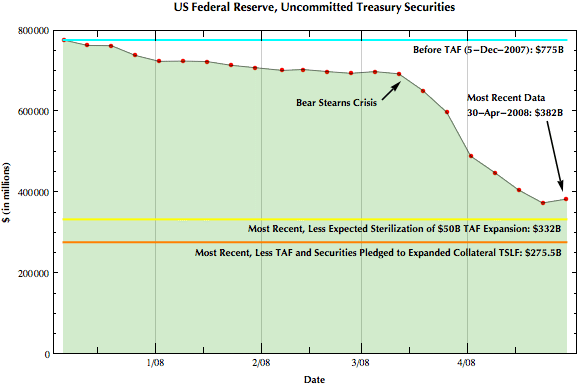The graph below plots the US Federal Reserve's stock of "uncommitted Treasury securities", defined as Treasury securities held outright less securities lent to dealers. The graph starts in December 2007, just prior to the announcement of the TAF program.

As of April 30, the Fed's uncommitted stock of Treasuries was $382B, just under half of its December 5 stock. The Fed recently announced a $50B expansion of the TAF program, and a widening of acceptable collateral for its TSLF program. Assuming the Fed sterilizes the extra TAF funding (very likely) and that the $200B pledged to TSLF is now fully exploited (likely), the Fed's stock of uncommitted Treasuries will soon be $275.5B. Just over 64% of the Fed's stock of Treasury's will have been exhausted since the Fed began its unconventional lending programs in December.
Data are taken from H.41 Factors Affecting Reserve Balances. I've assumed that all securities lent to dealers are Treasuries.
See also FED: Running Out of T-Bills at Alea.
| Steve Randy Waldman — Thursday May 8, 2008 at 2:34pm | permalink |
